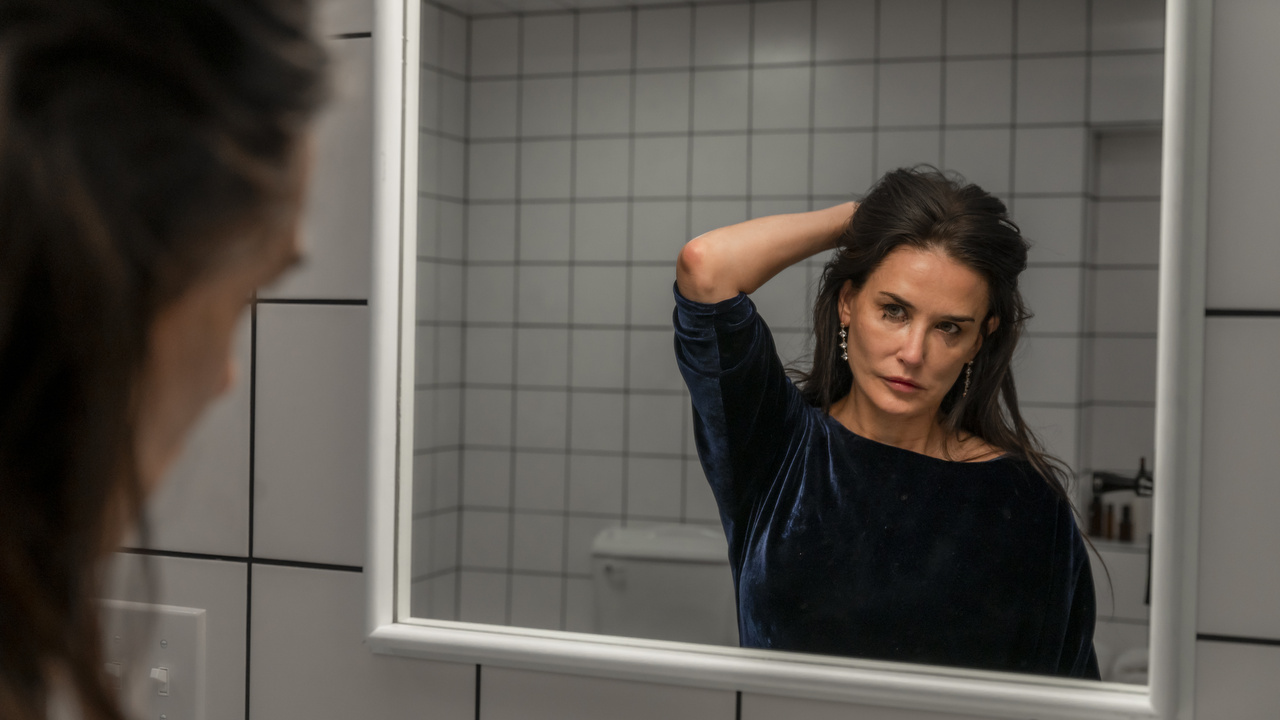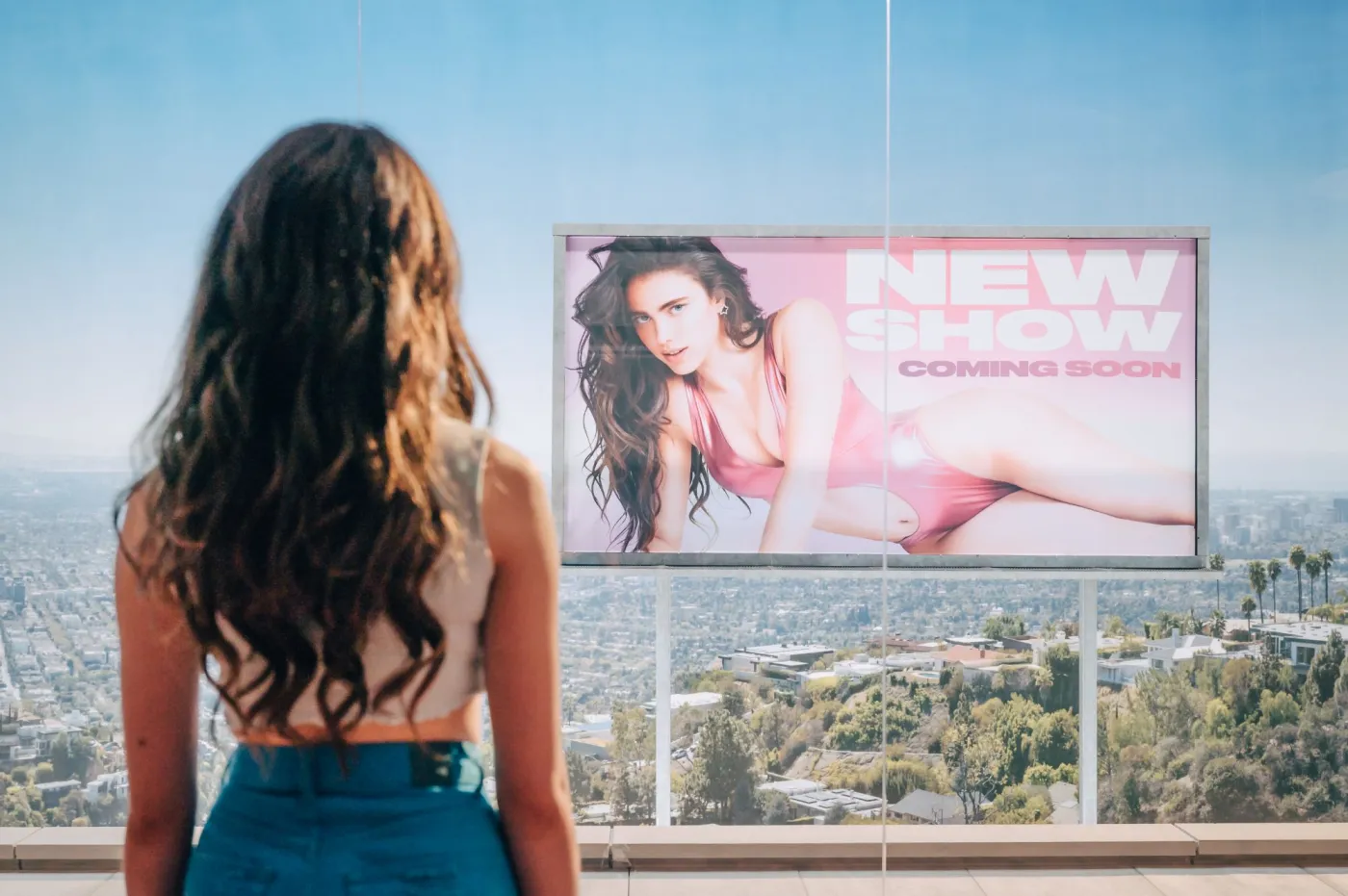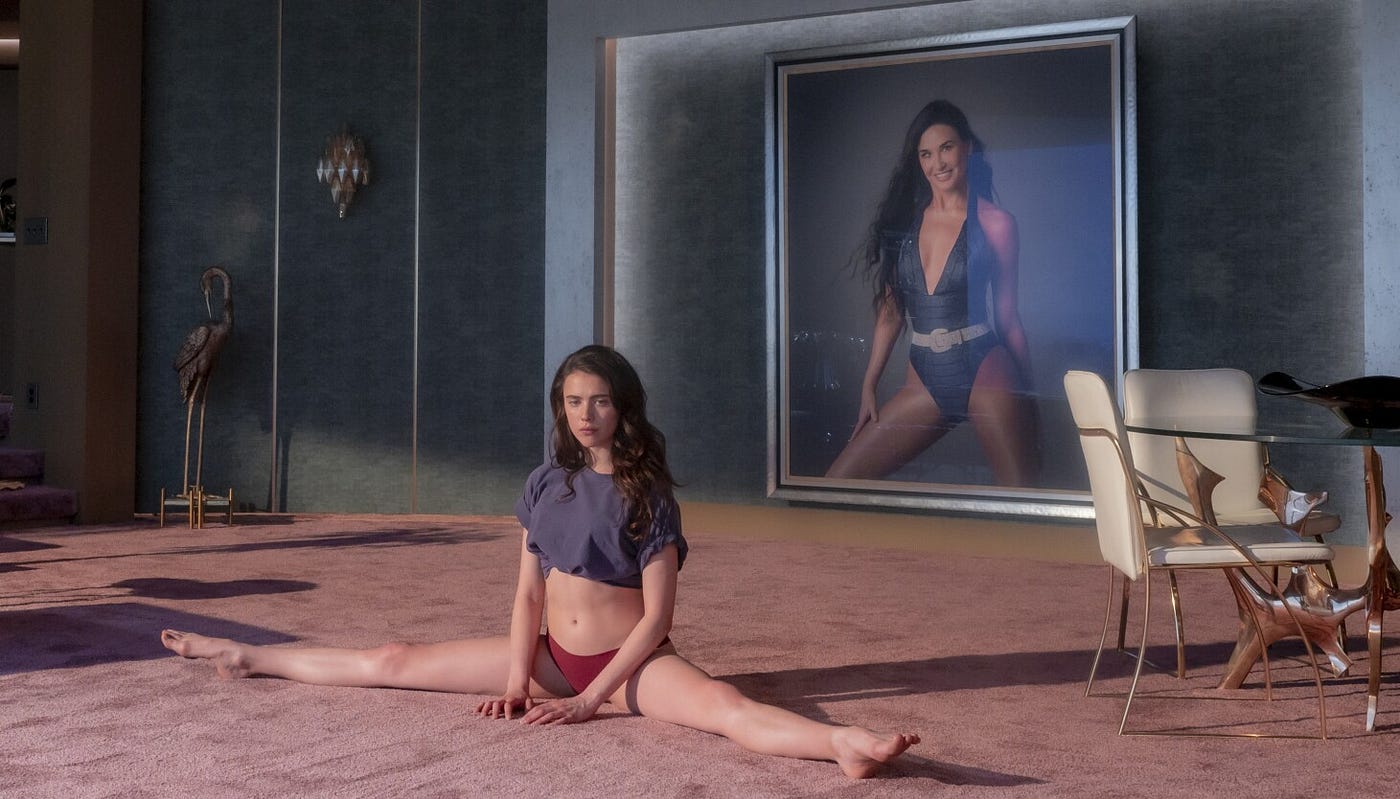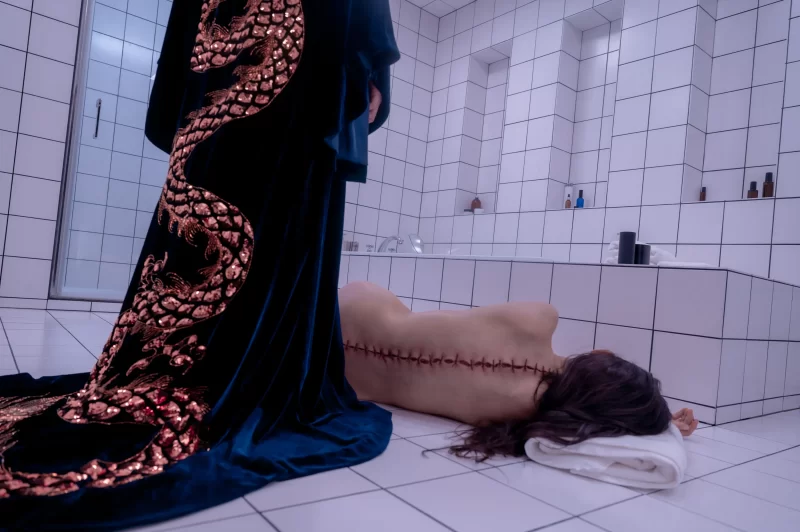I often write about my skeptical attitude toward films that arrive with high praise from festivals. This year, I’ve already been disappointed by many films. The Substance was one I didn’t have great expectations for, but I must admit that this time, I was wrong. The Substance not only deserves all the praise it has received, but I believe it should secure multiple nominations at the 2025 Academy Awards and unquestionably win in the editing category. It is the best film I’ve seen this year, after Dune Part Two. While Coralie Fargeat’s return after seven years offers a runway film that blatantly forces its message about women struggling against the media’s use of eroticism for ratings, the film’s stylistic elements balance out this heavy-handedness. As a result, it delivers a wildly thrilling session to its audience for 2 hours and 20 minutes. Throughout this review, I will praise the film, and I can confidently say that I couldn’t find a single aspect worth criticizing. The film, which I dare to call a masterpiece, captivated me with its terrifyingly effective technique.
Let’s briefly touch on the plot… Elisabeth Sparkle (Demi Moore), the iconic sexy face of the screen, thinks everything is going smoothly for her until she overhears a phone call from her producer, Harvey (Dennis Quaid), and her mood drastically changes. Upon hearing that someone younger is being sought to replace her due to her age, Elisabeth enters a crisis, seeking a solution. The solution, however, comes to her: The Substance. This mysterious drug clones the user, birthing a younger version of them while physically splitting their body in two, though their consciousness remains singular. While Elisabeth’s younger, better version, Sue (Margaret Qualley), reignites her youthful spark and restores her public allure, Sue’s neglect of her responsibilities causes Elisabeth’s body to begin deteriorating from within.

I’d like to begin by addressing the technical aspects of the film because what impressed me the most was its editing and cinematography. Particularly in every scene where Sue appears on camera after her creation, Raffertie’s music composed for the film transforms it from a mere movie into something resembling an Instagram reel or a stylish VHS yoga tape. What I love most about the film is its self-awareness. It has no concern with convincing the audience of the reality of its world. Everything, from the editing to the shots, from the set design to the colors, feels like an impossibility taking place in the void of space. There’s an overwhelming artificiality. Sue creates a runway effect, as if God were constantly shining a spotlight on her. We feel this most keenly when she dances before the two producers. Sue is presented almost like a sex robot set to debut at a 2025 tech expo—flawlessly perfect, the kind of woman every man would desire. The camera’s focus on her star-shaped earring, during a fragmented shot, quietly but clearly declares, “I am a Star.” Hello, Maxxxine. When the camera pulls back after she says her name, revealing her lips on multiple screens, it further strengthens this futuristic marketing scene.
In the scenes with Sue, the film transforms into a vision of 80s-style erotic American commercials. It feels like watching the trailer for GTA 6. The sun shines brightly, houses stretch endlessly wide, and everyone appears happy and sexy. Normally, I don’t find Margaret Qualley particularly sexy. She’s a sweet woman and, most importantly, a fantastic actress. I’ve been familiar with her since IO, but I believe she truly proved herself to everyone with The Maid. Yet, thanks to the film’s stylistic, smooth editing and focus on details, Margaret, dressed in a pink yoga outfit, has managed to embody sexiness here. Even I was sold—there’s no escaping Coralie Fargeat’s obsession with posterior shots. Normally, I’m someone who gets uncomfortable with unnecessary sex scenes in films and the excessive zooming in on behinds, but in The Substance, due to its theme, it doesn’t feel out of place. Throughout the film, Margaret’s behind is constantly thrust onto the screen, right in our faces. With the accompanying music, colorful costumes, and choreographed scenes full of beautiful women, the movie turns into a utopian 80s nostalgia trip in Sue’s segments. Especially in Sue’s scenes, there’s always a souce of 1985’s Jamie Lee Curtis. What starts as a fitness routine transforms into an erotic cult ritual. You forget about yoga and begin focusing solely on the lithe body beneath the vibrant yoga outfit. Pure eroticism.
However, the moment the camera shifts away from Sue, we return to the real world. Elisabeth represents the film’s contrast. Where Sue’s world is shiny, pink, and Barbie-like, Elisabeth brings all the grayness of Oppenheimer. From what I understand, the film builds its story on two core themes. The first is the trauma inflicted on women by beauty standards that society once imposed. The second is the conflict between youth and adulthood. Although Elisabeth is still stunning and fit, she is on the verge of becoming a victim of society’s view that women’s worth diminishes as they age. Harvey is on the hunt for a new young face he can monetize for years to come. The industry is ruthless, filled with crushed dreams beneath Harvey’s steel heels. Elisabeth finds herself torn, caught between her desires. Every morning, she wakes up in her house overlooking downtown LA, staring out of the glass walls, yearning to see herself on the billboard. Though she is entering middle age, her desires remain youthful. She doesn’t want to lose her star status. Despite still having the ability to captivate people with her presence, her mind is poisoned by beauty standards. Seeing a fresh young face on the billboard across from her house triggers her self-destruction. Yet, the film shows her she is still desired by many. But for her, that isn’t enough. And that’s why she seeks an unconventional solution.

Unfortunately, the film becomes somewhat vague at this point. Each time Elisabeth contacts the intermediary to complain about Sue, it gives the impression that the two have separate consciousnesses. After all, despite the deformities in Elisabeth’s body, for her to persist in switching places, Elisabeth must still be living and feeling through her. Yet, especially towards the end, the film seems to portray them as distinct individuals. I believe the core theme here is the maturity gap between youth and adulthood. While Sue is young and eager to experience life, Elisabeth has already traveled the same paths many times. The conflict between them stems from the carelessness that comes with youth, the avoidance of responsibility, and the lack of maturity. Sue, enjoying the pleasures of her youthful existence, does not want to return to her old self. We’ve all experienced that “What’s the harm?” mentality. Many times, we’ve shirked our duties, thinking nothing would come of it. But unfortunately, avoiding responsibilities never ends well. Sue’s busy schedule continuously prevents her from returning to her original body. And as Sue defies the rules, Elisabeth suffers the consequences. Sue believes that her actions will never affect her, but life doesn’t work that way. The fallout from irresponsibility always comes back to impact us.
The Substance opens by addressing the trauma caused by beauty standards, which once, and perhaps still, hang over women like the sword of Damocles. With the use of the drug, Sue emerges, and the film swiftly morphs into a glittering, almost surreal commercial for the American Dream. However, as responsibilities are neglected, just as all beautiful things begin to fall apart, so does the film. It quickly shifts from Barbie to The Toxic Avenger. As Elisabeth in her time gradually turns into a creature, Sue in hers struggles against Elisabeth’s sabotage. But in reality, Elisabeth fails at her attempts to sabotage Sue. This is one of the film’s narrative strengths: everything that happens to Sue in the end is entirely due to her own choices and irresponsibility. Ah, the mistakes of youth.
When the film transitions into the “Monstro Elisasue” segment, it fully embraces the Toxic Avenger mode, turning into an absurd comedy. Elisasue’s stubborn insistence on attending the New Year’s Eve party despite her grotesque deformities, and the way everyone there reacts to her like she’s Frankenstein, had me laughing quite a bit. At this point, the film shifts focus from beauty standards to the reality that people’s desires often conform to these standards. Even though Elisasue has lost all her beauty and transformed into a monster, she remains obsessed with her desires and preserving her fame. The Tarantino-like scene where she drenches the room in blood adds a fantastic touch to this sequence. After all, as we’ve seen in Revenge, Coralie Fargeat doesn’t just have a penchant for fixating on bodies—she also loves drenching them in blood. And truth be told, Elisasue’s blood-spraying rampage might be the best New Year’s show ever broadcast. It couldn’t have been better.

In conclusion, The Substance, with its stylistic editing and story that shatters pink-hued dreams, is the best film I’ve seen this year after Dune: Part Two. As a dedicated movie follower, I can confidently say that The Substance deserves Academy Award nominations for directing, cinematography, original screenplay, editing, and makeup. And I would argue that it faces no real competition in the editing category. The film’s enjoyment factor skyrockets thanks to its close-up, commercial-like editing style. It’s fully aware of its status as a film, presenting life’s most essential moments in a dazzlingly stylized way, like an Instagram Reel or a yoga VHS tape. On a technical level, it’s the best work I’ve seen this year alongside Dune, which, in its own right, is an epic universe-building film. In contrast, The Substance strives to prove that everything you see is a façade. That’s why, in terms of editing, it even surpasses Dune.
The film’s message, though obvious—focusing on the trauma of beauty standards once hanging over women like the sword of Damocles—is balanced by the commercial-like artificiality of its presentation. It has a clear aesthetic goal, which it achieves in Sue’s segments. When we switch to Elisabeth’s side, we’re faced with a traumatic story that takes us in the direction of The Toxic Avenger. The conflict between the two is as stark as the contrast between Barbie and Oppenheimer—the battle between pink and gray. While I’m in love with the film’s technical brilliance, Coralie Fargeat’s storytelling also managed to captivate me. Honestly, this is the best film I’ve seen this year after Dune, and it’s highly likely it will become one of my collection’s treasures.

Cast & Crew
director: Coralie Fargeat
writers: Coralie Fargeat
starring: Demi Moore, Margaret Qualley, Dennis Quaid
UK – FRANCE | 2024 | 141 MINUTES |
